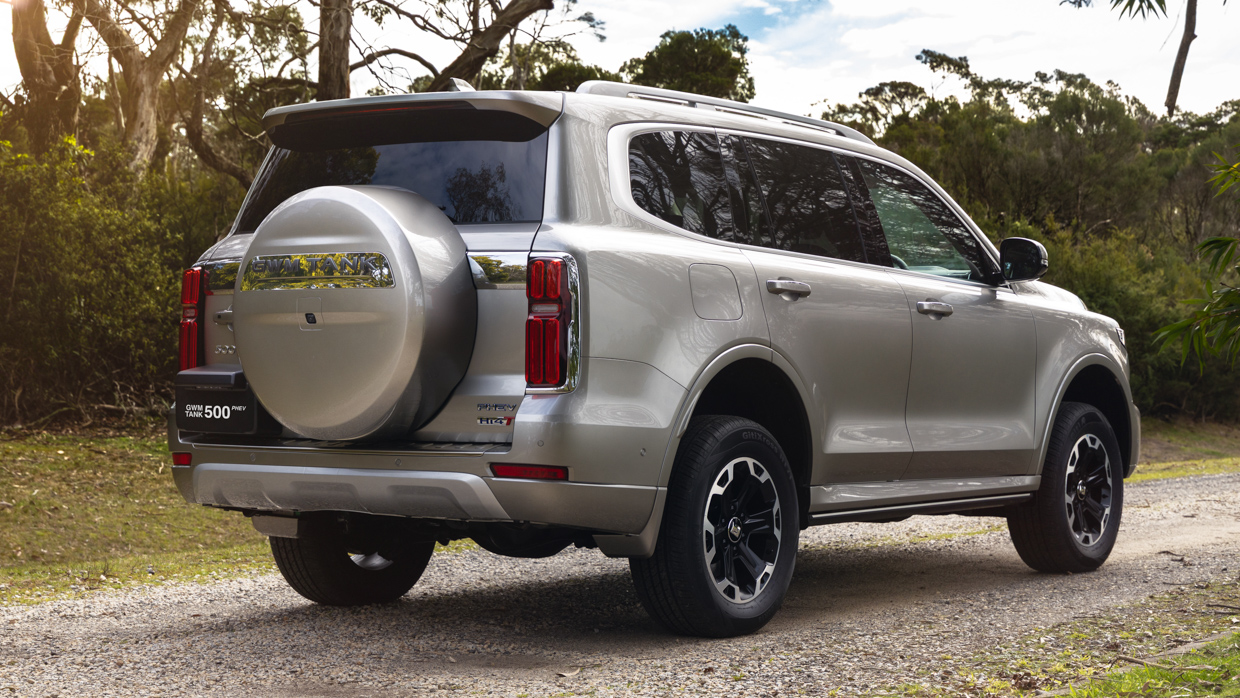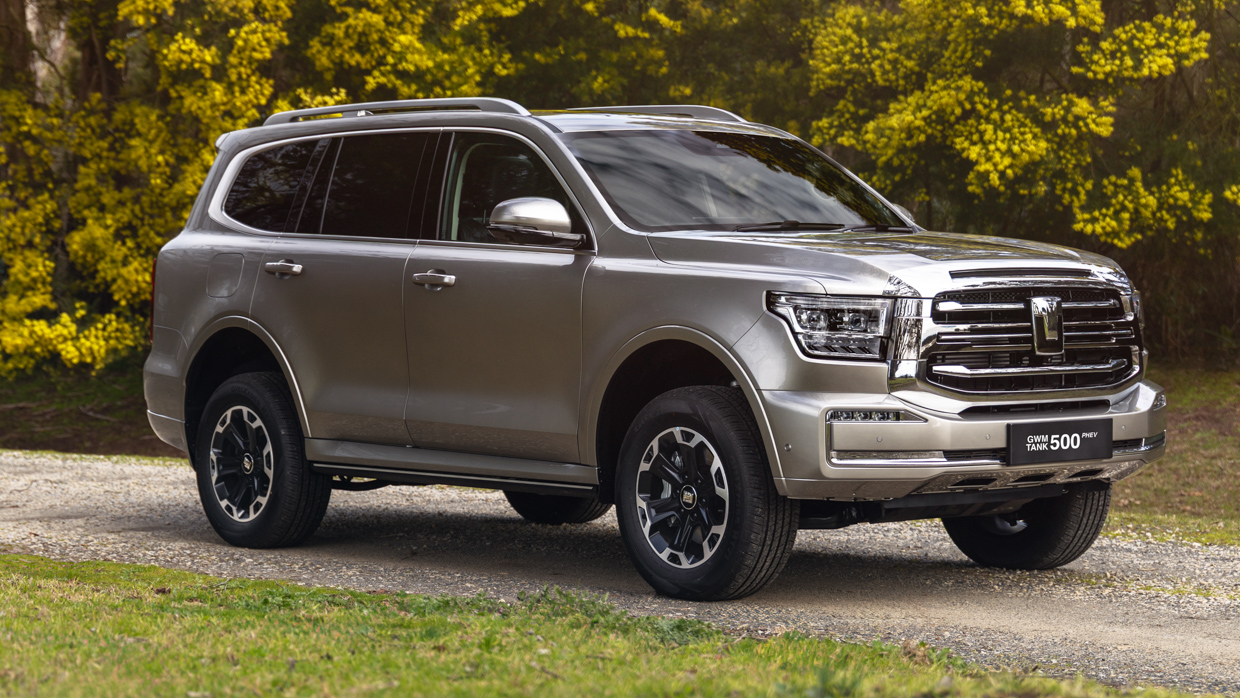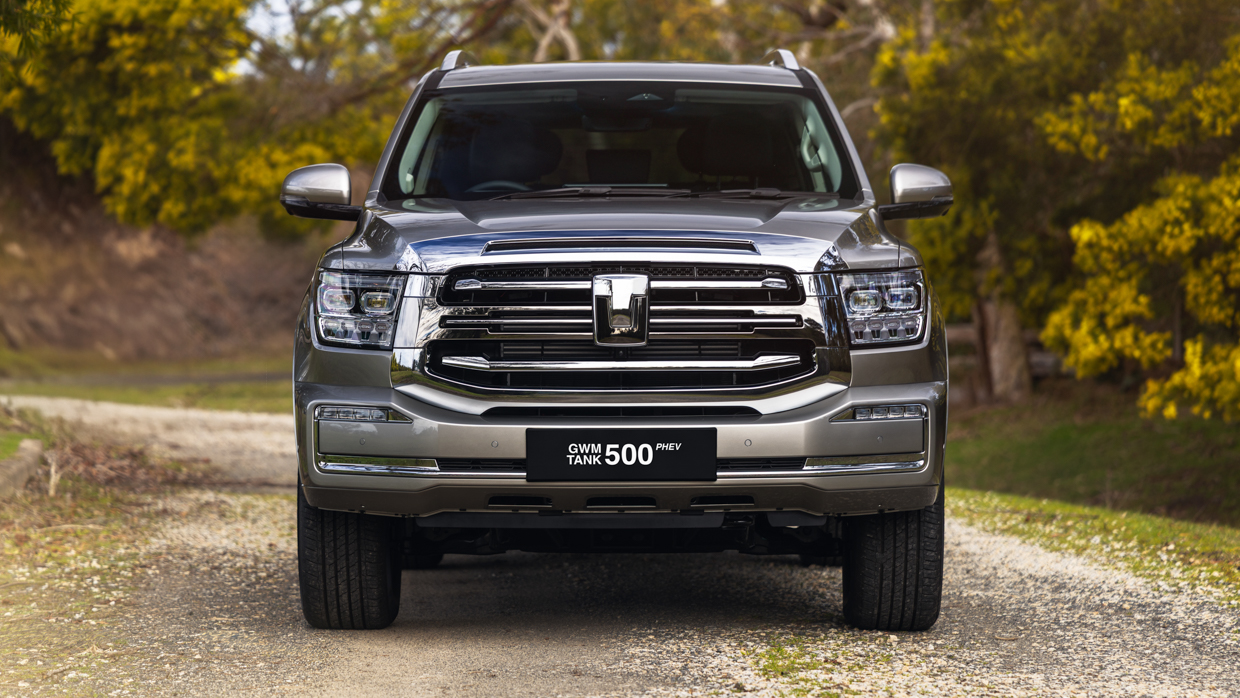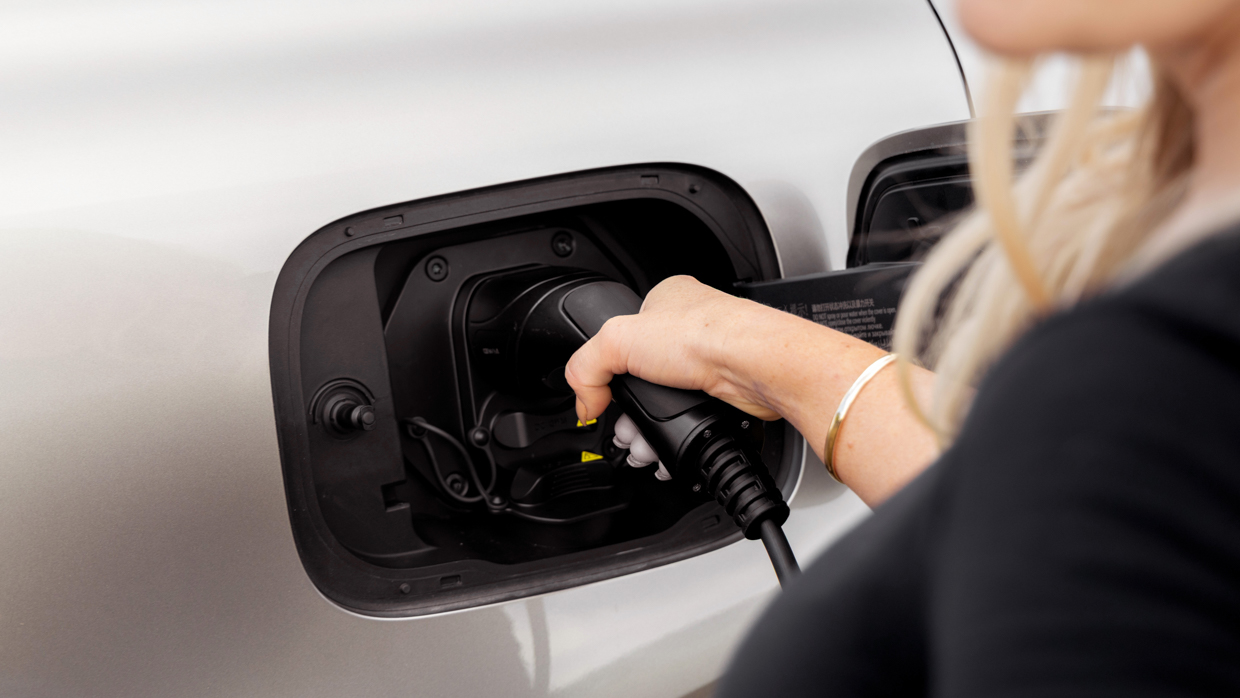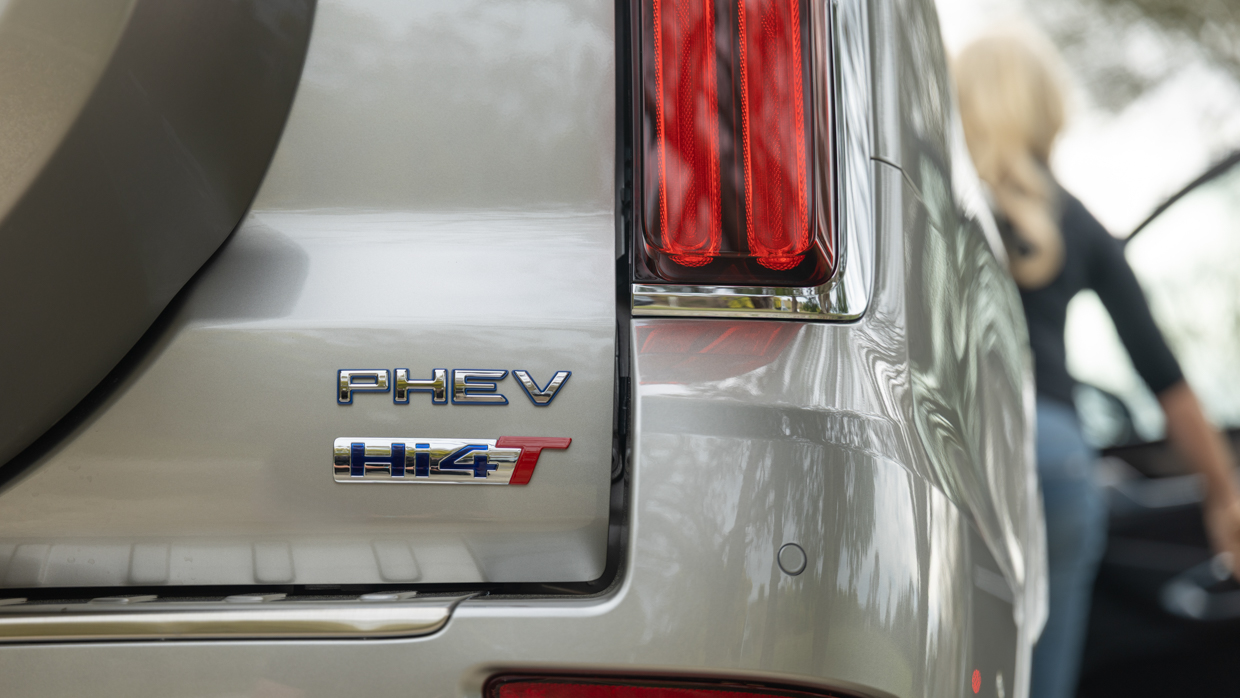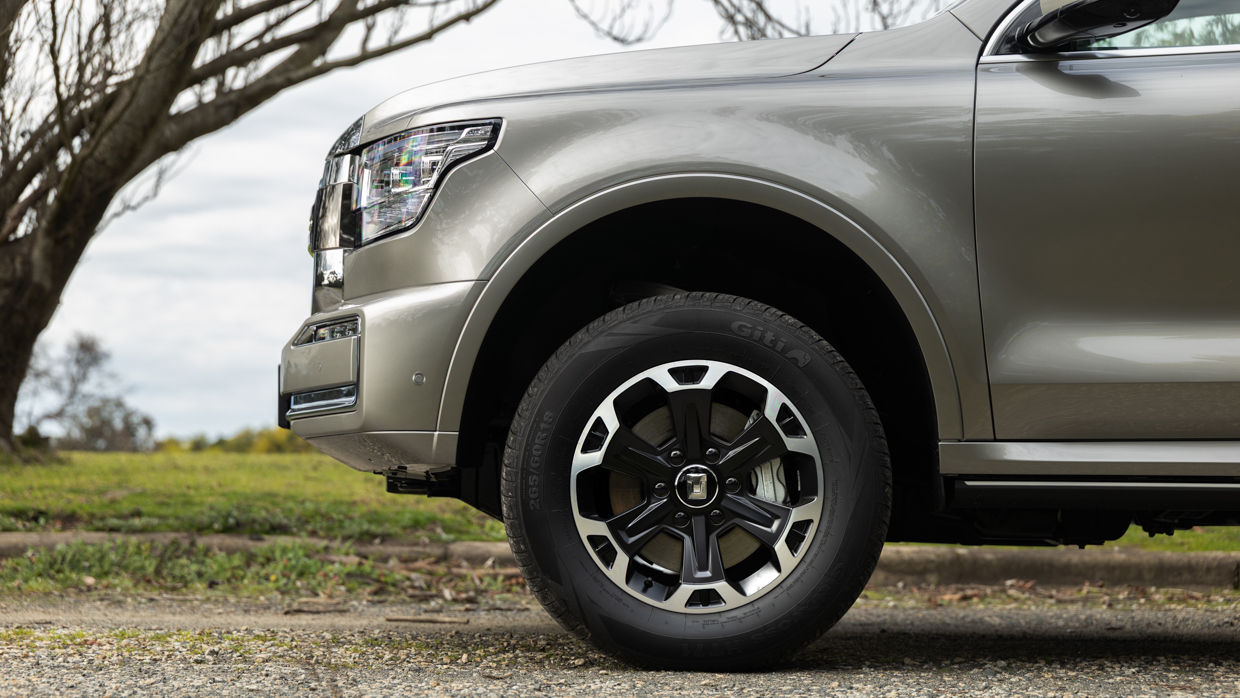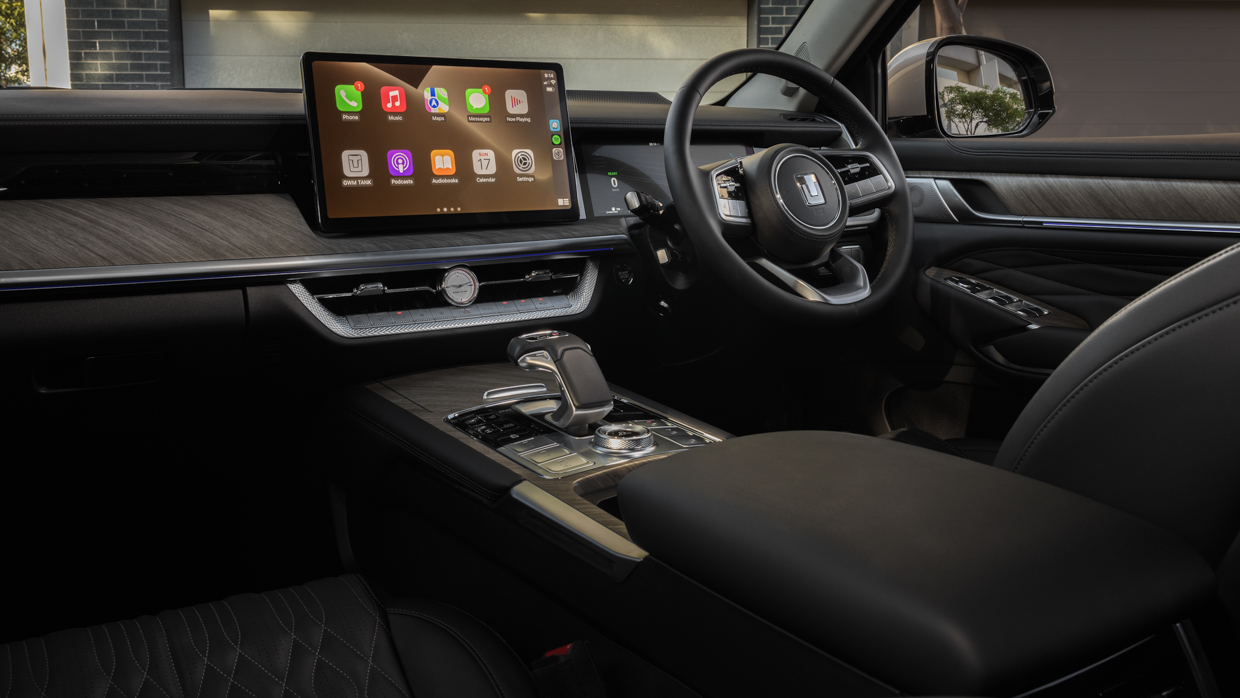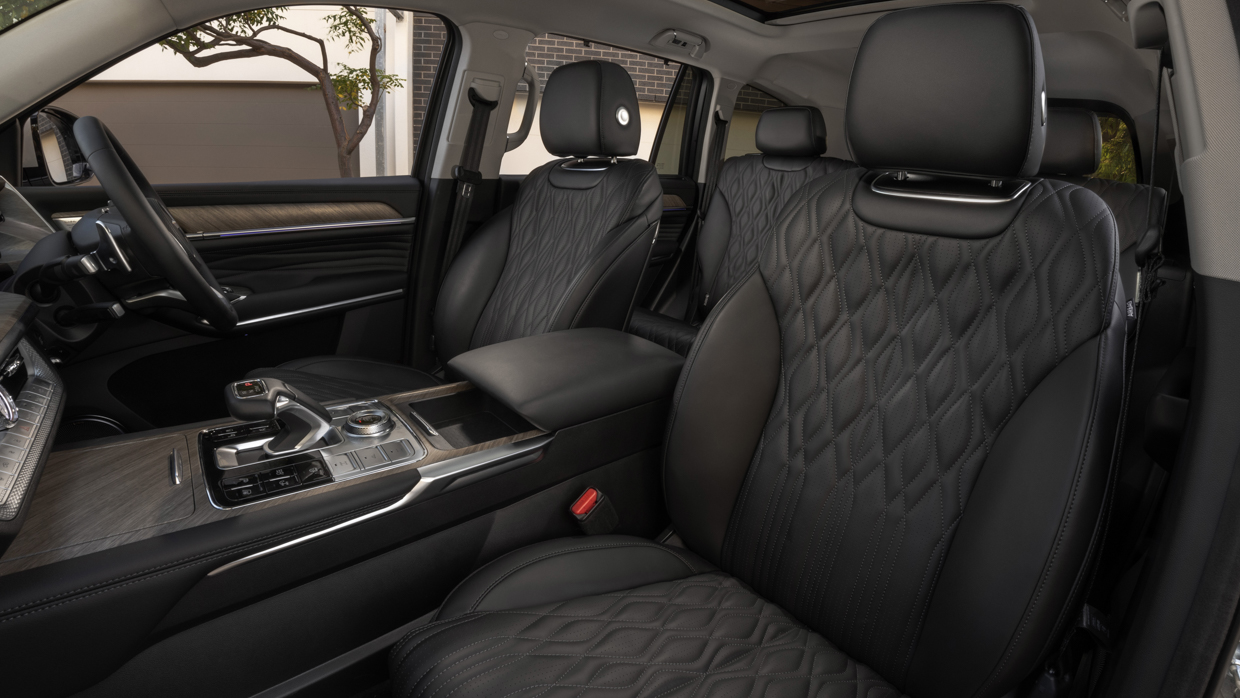-
Car Reviews
- All reviews
- Midsize SUVs
- Small cars
- Utes
- Small SUVs
- Large SUVs
- Large cars
- Sports SUVs
- Sports cars
- Vans
Latest reviews
- Car News
-
Car Comparisons
Latest comparisons
- Chasing Deals
New Tank 500 plug-in drivetrain delivers more power and greater fuel efficiency at a $6000 premium over plugless equivalent
Update 8th October 2025
GWM has officially launched its hotly anticipated Tank 500 plug-in hybrid, with pricing confirmed to start at $79,990 drive-away.
The Tank 500 will initially be marketed in just one trim grade — ‘Ultra’ — with an identical equipment list to its hybrid counterpart. The two models differ in one category, number of seats, with the plug-in strictly developed as a five-seater.
GWM’s new plug-in hybrid drivetrain promises more power, better fuel economy, and electric-only driving capability over the current plugless Tank range.
For a limited time, Tank 500 PHEV customers will benefit from a $2000 launch offer drive-away discounts, bringing the drive-away price to $77,990.
An SUV alternative to the brand’s own $56,990 DA Cannon Alpha PHEV (currently discounted to $53,490 DA), the Tank 500 PHEV plays largely in a class of its own — with BYD not yet offering an SUV version of its $59,400 DA Shark 6 plug-in hybrid ute.
The Tank 500 offers an electrified alternative to Australia’s most popular large off-road four-wheel drives such as the $79,990 Toyota Landcruiser Prado GXL, and $67,290 Ford Everest Trend 4WD. Prices are before on-road costs.
Both segment leading rivals have significantly less power than the 500 PHEV, with no capacity for hybrid-only driving, and of course, no plug-in hybrid drivetrain options.
The $79,990 drive-away sticker price of the Tank 500 Ultra PHEV means plug-in power commands a $6000 premium over the equivalent plugless Ultra, which starts at $73,990 drive-away.
No word yet on other Tank 500 trim grades also receiving plug-in power. GWM currently offers a sharply priced Lux HEV base model for $65,490 drive-away, and range topping Vanta HEV for $75,990 drive-away.
BYD is looking to add plug-in hybrid off-roaders to its stable, too, under the luxury Denza brand with B5 (Prado/Tank 500 size) and larger B8 under consideration.
The Tank 500 PHEV vitally retains the same equipment level and three-differential-lock mechanical four-wheel drive system as featured on current 500 models, but will exchange the standard seven-seat configuration for five seats to accompany the larger PHEV battery.
The fuel tank is reduced from 80 litres to 70 litres for the same reason.
Under the skin, the Tank plug-in features the same 180kW/380Nm 2.0-litre turbocharged four cylinder engine, nine-speed conventional automatic, and full-time four-wheel-drive system as its mild-hybrid counterparts.
It differs, however, with a larger transmission-integrated electric motor, producing 35 percent more power over that found in the MHEV. Battery size also increases dramatically, up from 1.76kWh to a 37.1kWh NMC unit.
Resultantly, the combined output of the new Tank 500 plug-in is 300kW/750Nm – a 15 percent increase over the MHEV – with GWM claiming an improved 0-100km/h time of 6.9 seconds (up from 8.5sec), a combined fuel consumption of 2.1L/100km, an EV-driving range of 120km, and a total combined range of 950km.
All figures presented by GWM are held to lax NEDC testing standards.
The Tank’s new PHEV system is compatible with 50kW rapid DC charging, with a 30-80 percent charge taking 24 minutes, or ‘from empty’ AC charging taking around 6.5 hours. The Tank 500 PHEV supports vehicle-to-load too, says GWM, supporting discharge up to 6.0kW.
| GWM Tank 500 variant | Price drive-away |
|---|---|
| Lux HEV | $65,490 |
| Ultra HEV | $73,990 |
| Vanta HEV | $75,990 |
| Hi4-T Ultra PHEV | $79,990 |
Latest news
About Chasing cars
Chasing Cars reviews are 100% independent.
Because we are powered by Budget Direct Insurance, we don’t receive advertising or sales revenue from car manufacturers.
We’re truly independent – giving you Australia’s best car reviews.
